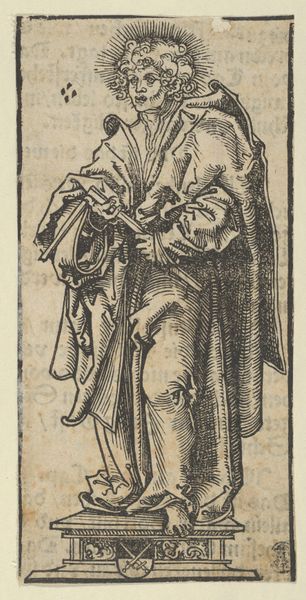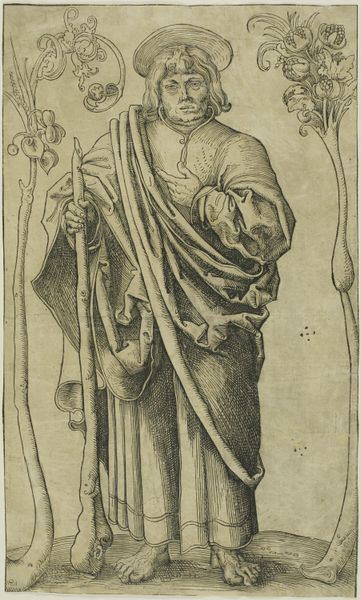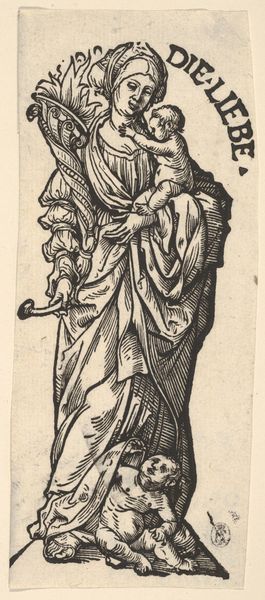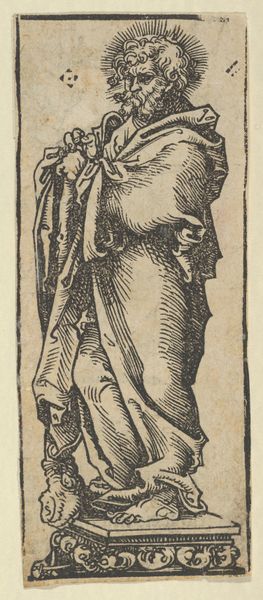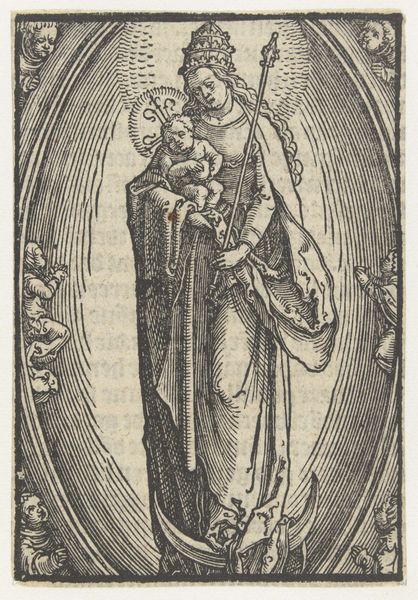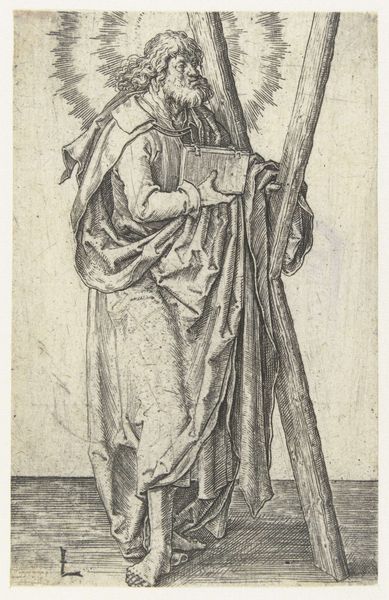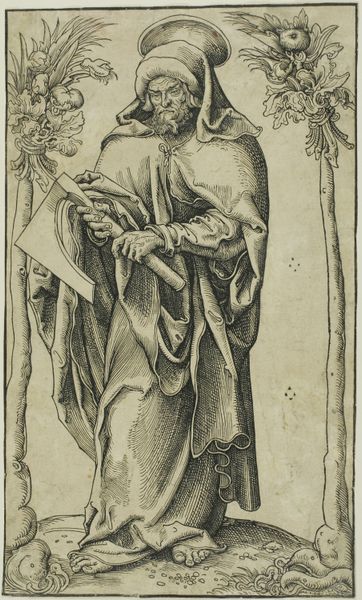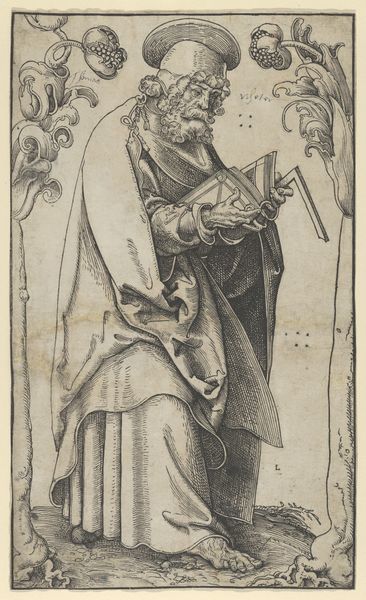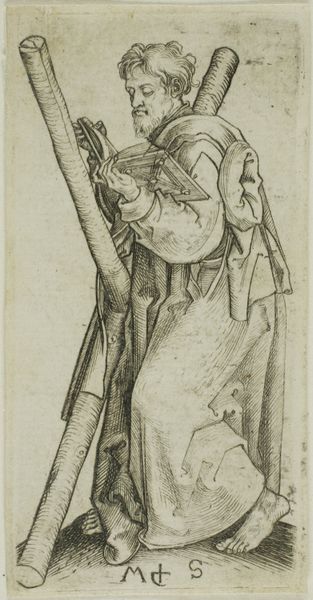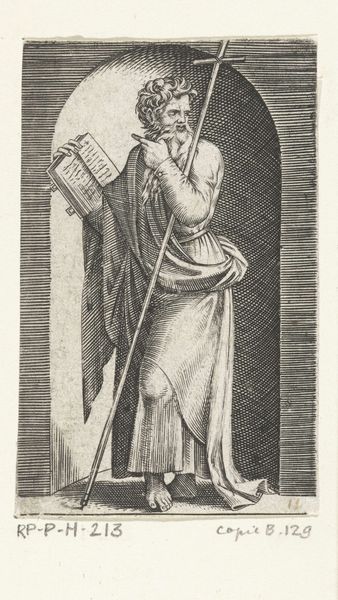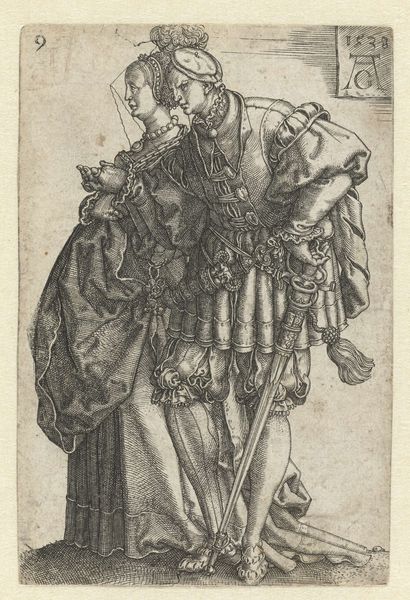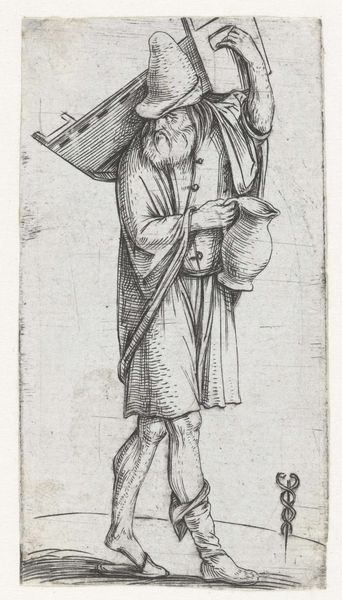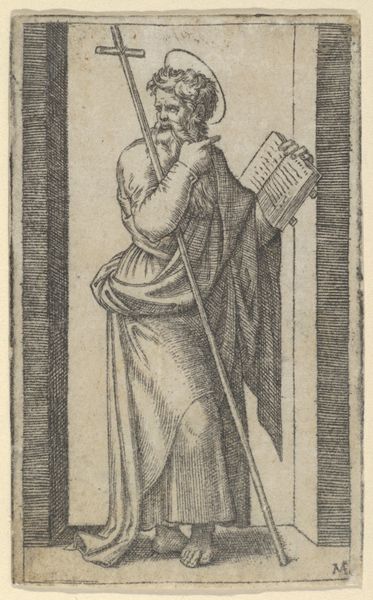
print, engraving
#
portrait
#
pen drawing
# print
#
figuration
#
northern-renaissance
#
engraving
Copyright: National Gallery of Art: CC0 1.0
Editor: Here we have "Saint Andrew," an engraving by Lucas Cranach the Elder. There’s such fine detail, and the textures almost feel tactile, but there's also something unsettling about the intensity of his gaze. What draws your eye when you look at this, and how do you interpret the cultural context? Curator: Well, immediately I'm thinking about the rise of printmaking during the Renaissance and how artists like Cranach helped popularize religious imagery for a wider audience. This isn’t a grand altarpiece for a church; it's an accessible, reproducible image. It brings the sacred into the domestic sphere. Note the detail of the foliage. Do you think its addition to the scene changes how the figure would have been received? Editor: That makes sense. I was so focused on St. Andrew and his...instrument of torture, I hadn't thought about how a print democratizes access to art. The frame of foliage is visually interesting, perhaps softening the martyr theme to promote peaceful contemplation in a private devotional setting. It changes the viewing from public spectacle to private morality. Curator: Precisely. Cranach and others walked the line between devotional art and increasingly individual interpretations. Also, remember that Reformation politics heavily impacted Cranach and his patrons; these images were part of the debates around religious authority and how it's communicated to the public. Considering that context, does this print feel any less "unsettling" to you? Editor: I see the point about the political moment now. It isn’t *just* unsettling on a personal level, it’s unsettling because it hints at a time of intense religious and political conflict, which would affect public perception of the art and its context. That makes a huge difference. Thanks. Curator: Exactly. Looking at art, especially works like this, always involves unpacking layers of history and power.
Comments
No comments
Be the first to comment and join the conversation on the ultimate creative platform.
